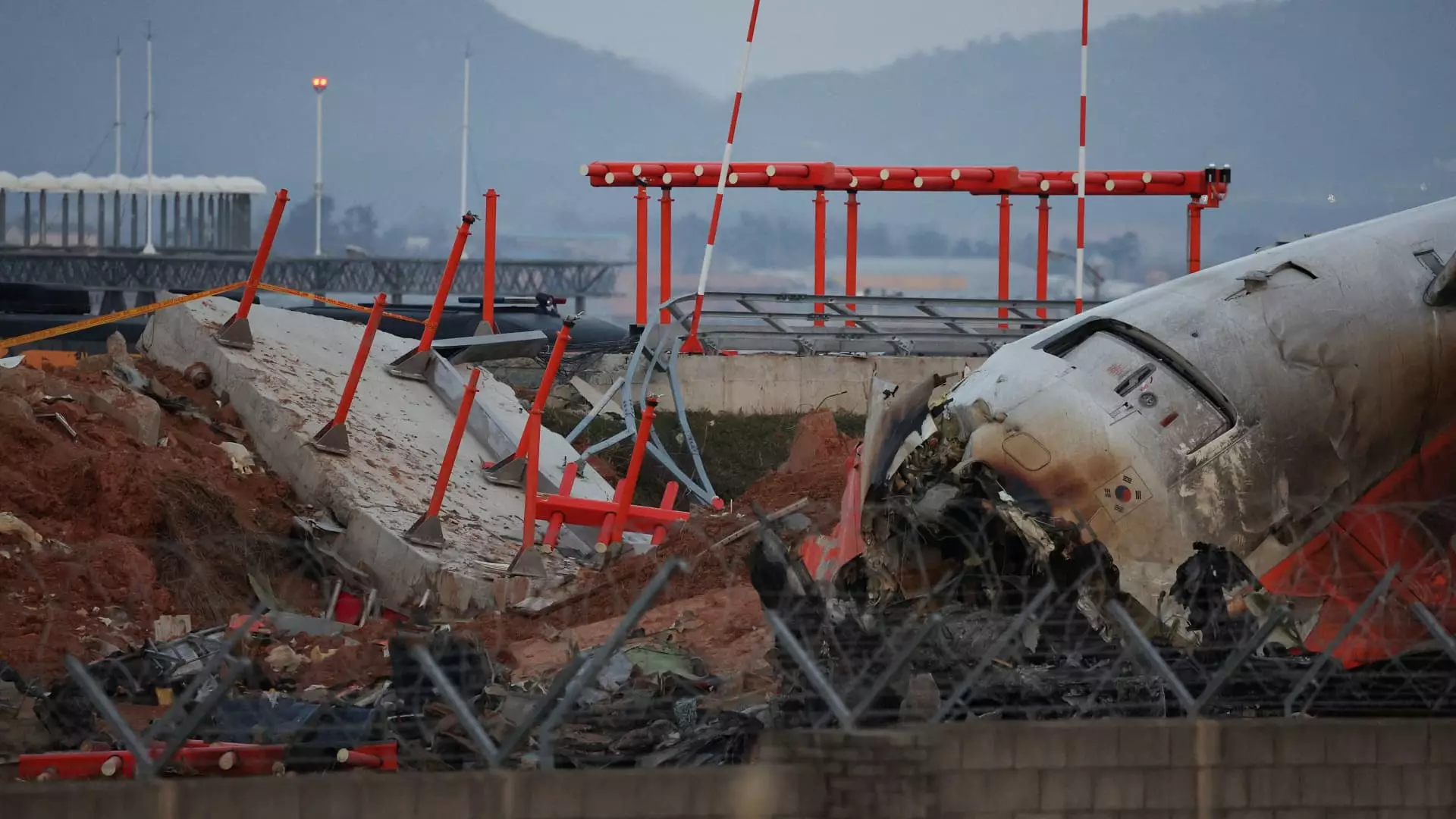The recent tragic incident involving Jeju Air’s flight 7C2216 has left the South Korean aviation community and families of the victims grappling with unanswered questions. The discovery that the flight data and cockpit voice recorders stopped functioning merely four minutes before the aircraft’s disastrous landing signifies more than just a technical malfunction; it underscores the complexities of aviation safety and accountability. Such failures raise suspicion and concern, particularly when the black boxes are essential for elucidating the causes behind aviation disasters.
On December 29, the Boeing 737-800, which was en route from Bangkok to Muan, faced a harrowing sequence of events after a bird strike was reported by the pilot. Just minutes later, a Mayday call was issued, yet disaster soon followed. The aircraft belly-landed, overshooting the runway, and ultimately collided with an embankment, resulting in an inferno that claimed the lives of 179 individuals onboard, with only two survivors—a fact that amplifies the tragedy of this situation.
In the aftermath, investigators from South Korea are racing to piece together moments leading up to the disaster. The troubling news that the recorders halted four minutes pre-impact spurred an immediate investigation into whether a catastrophic power failure occurred, cutting off all power sources, including backups. Such circumstances are unusual in the aviation industry, raising additional eyebrows among experts who anticipate a thorough examination of not just the aircraft but the conditions surrounding the bird strike as well.
The transport ministry’s declaration regarding the investigation’s transparency is a welcome sign for victims’ families who are understandably distraught and agitated. Many argue that the ministry should not solely steer this investigation and have called for independent experts to ensure that findings reflect a fair and unbiased assessment. This skepticism is critical in genteelizing the integrity of the investigation, as public trust hinges on its credibility.
The probe is not only focusing on the aircraft itself but also considers environmental elements, particularly the embankment implicated in the crash. Designed to support a localizer system for aircraft landings, its construction and proximity to the runway raise pivotal questions about safety regulations and engineering decisions. Investigators are examining whether the rigid material used contributes to hazards that could endanger future flights.
This incident serves as a grave reminder of the continuous need for refinement in aviation safety measures. The premature termination of data recording highlights a crucial area requiring urgent attention. It signals a gap in current protocols that need to be addressed to protect future passengers. Conclusively, this incident transcends individual tragedy, shedding light on broader systemic failures and necessitating comprehensive reforms to ensure that operational safety in aviation truly prevails.


Leave a Reply